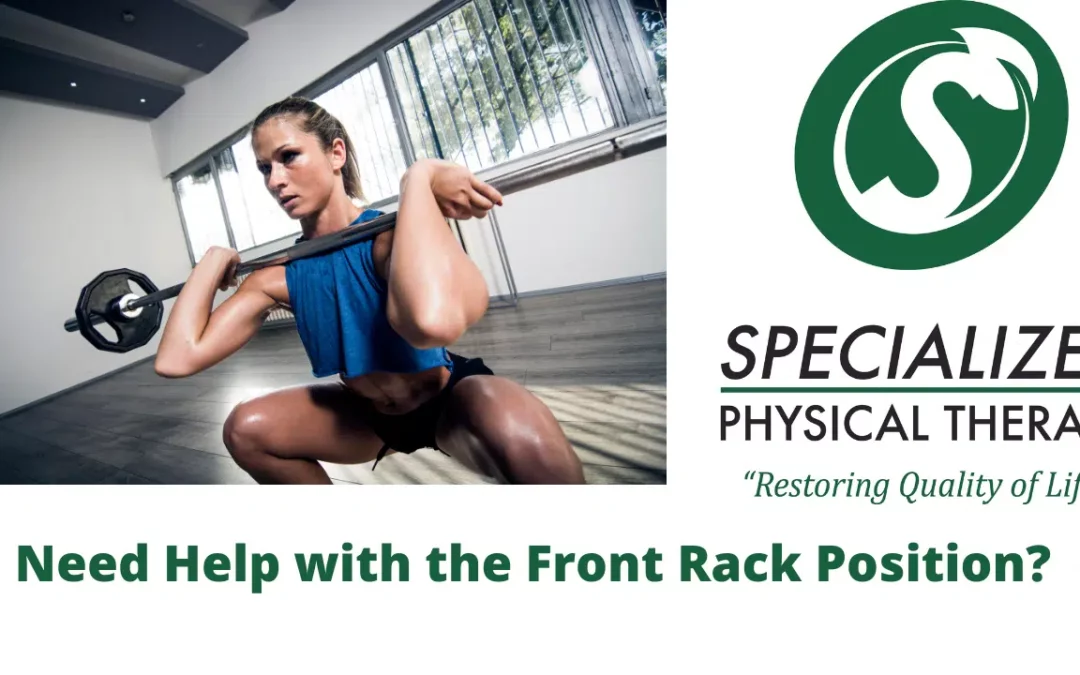What is the front rack position?
Front squats and overhead pressing are crucial parts to functional strengthening. In a day to day strengthening regimen, these movements are at times avoided due to the mobility and strength requirements needed for the front rack position. On the other hand, functional fitness classes may use these movements frequently in their programming without assessing if an individual can properly obtain a front rack position. The front rack position requires a combination of available shoulder external rotation, lattisimus dorsi extensibility, wrist extension, and mid back activation.
In a typical front rack position with a barbell, the barbell should be resting along the shoulders right near the clavicle as the hands will be right outside shoulder width. For a front squat, the elbows punch forward so that your elbows face the wall in front of you. For an overhead press motion, the elbows do not have to be as high, but to ensure your forces will be stacked, the elbows should still rest in front of the barbell. If there is a lack in one or more of these requirements, the elbows can dump forward and place excessive stress on the shoulders, wrists or low back region. Poor form under low load and repetitive reps or less reps with higher loads, stress can turn into irritation of these body parts.
Do you struggle with the front rack position?
So if you’re one who is struggling with keeping that barbell up, how do you figure out why?
That is where your physical therapist comes in. There are mobility and strength tests for each area that we can evaluate and determine what may be lacking in order to achieve the perfect position. From there, individual plans are made to address the deficits in shoulder strength and range of motion, wrist range of motion, lat length and thoracic mobility and strengthening.
Quick ways to assess your mobility
For assessing wrist extension, kneel down on the floor and place your hand flat on the ground with fingers facing away. Lean forward as far as you can with your whole hand maintaining contact on the ground. If your forearm does not pass vertical or at least hit vertical, then wrist extension may be limiting your position.
Assessing your elbow flexion is fairly easy. With your elbow facing the wall in front of you standing, you should be able to bend your arm and touch your shoulder, even if you need to apply overpressure with the other hand. Actively stretching your arm into front rack position consistently should help make a front rack position easier to obtain.
For shoulder external rotation, stand with your back against the wall. Lift your arm to 90 degrees in front of you and bend your elbow to 90 degrees. From here, try to turn your forearm out. Your forearm should be able to break neutral. If not, actively stretching and improving external rotation activation will assist in your position.
Assessing thoracic mobility is a crucial part of front rack mobility. Place yourself right next to a wall, kneel on your knees and sit back on your heels. With the arm closest to the wall, place your forearm on the ground in front of your chest. With the other arm, place your wrist behind your back. From this position, you should be able to touch the wall as you rotate. If not, thoracic mobility and activation exercises will assist in your mobility and strength in the front rack position.
Check out our video of the above techniques. Also check out our blog on overhead lifting.



